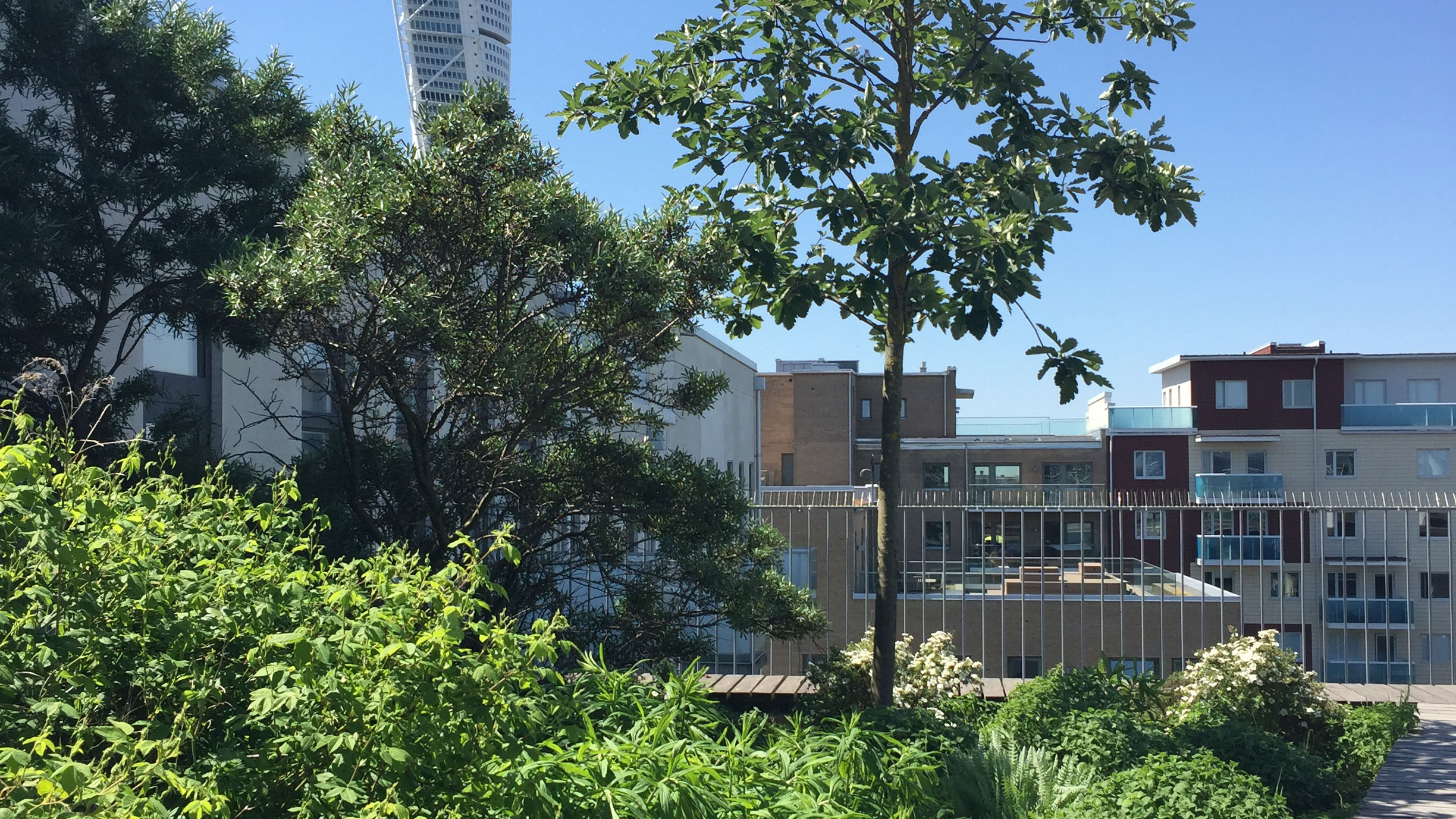What have you been investigating in your latest project?
– We have been looking at a new system for irrigating façade greenery that could reduce maintenance requirements, reduce water consumption and retain more stormwater. It involves channelling rainwater from the roof through the planter boxes so that the plants are irrigated from below through the soil. The idea is that the façade greenery will survive on rainwater alone and that irrigation will be automatic, minimising maintenance.
Why are you investigating this?
– The thing that most often fails with building greenery is maintenance. It could be the technical system failing or the human factor, for example someone forgetting to turn off the irrigation system in winter which causes the plants to die. Therefore, a low-tech system like this, using natural processes, could increase the likelihood of the greenery thriving.
How has it gone so far?
– It looks promising! We built a prototype and planted the plants last autumn together with the Scandinavian Green Roof Institute and SLU, right now it is growing and so far the system is working. The next step is to measure the moisture content and temperature of the soil. In the prototype we add water and do not rely on the weather. By measuring how much water is used, we can calculate how much water the plants need and deduce how much vegetation a system like this could manage to irrigate per square metre of roof.
What benefits can façade greenery bring?
– Greenery contributes many so-called ecosystem services such as cleaning the air and enhancing biodiversity. Vegetation can also improve the microclimate, for example by providing solar shading or wind protection. It creates many recreational values for people. We need greenery in many forms in the city and building-integrated greenery can never replace our parks. But it can make more places in the city pleasant to spend time in and provide a sensory experience closer to home or office. Even if greenery is only something you experience by sight, it is an incredible quality.
